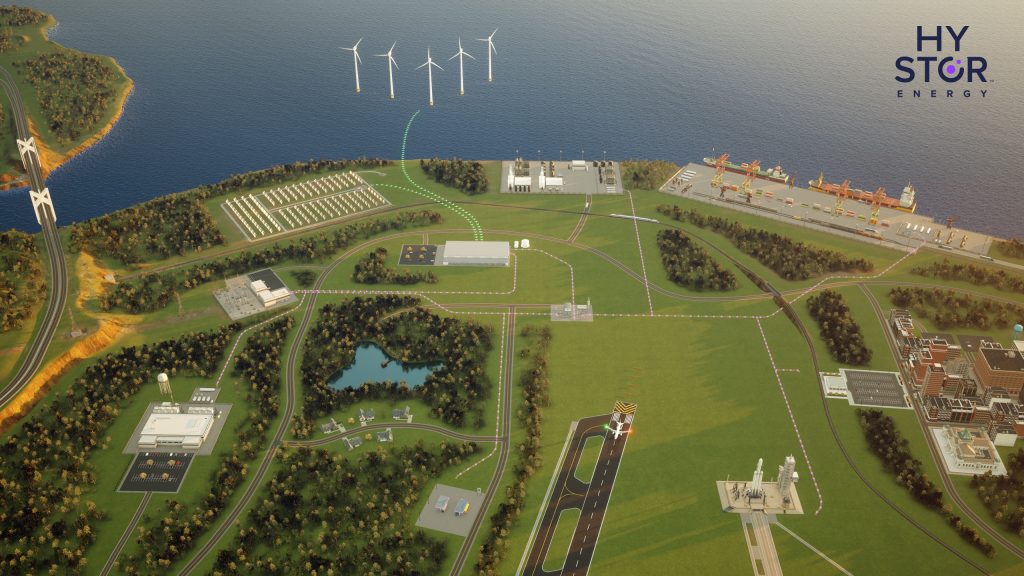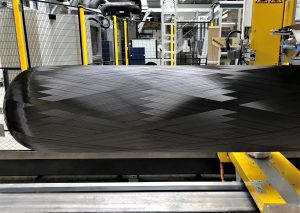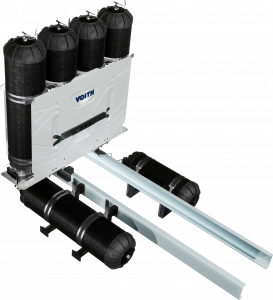

Momentum in the Hydrogen Energy Movement
Hydrogen is often touted as the green energy carrier of the future – and it’s time may arrive sooner than you think.
“There are already 10 million metric tons being tanked, trucked and used around the country in petroleum, fertilizer, chemical, food and other industries,” says Frank Wolak, president and CEO of the Fuel Cell and Hydrogen Energy Association (FCHEA). “By 2050, it’s expected that hydrogen could account for 14% of energy use in the United States.”
There’s reason for optimism: Hydrogen is a clean fuel that can be produced from numerous domestic sources, such as natural gas, biomass and renewable power. It can be generated from greenhouse gas-neutral sources, which aids in decarbonization efforts and addresses climate change concerns. When consumed in a fuel cell, hydrogen produces only water.
“Hydrogen is truly that missing piece to the 100% decarbonized energy system puzzle,” says Claire Behar, chief commercial officer at Hy Stor Energy, a company that is developing and advancing green hydrogen production, storage and delivery. “Hydrogen has the power to decarbonize high energy-intensive industries and provide reliability for renewable sources and long-duration green energy storage.”
The FCHEA projects that $750 billion in revenue will be generated along the hydrogen value chain by 2050 – $475 billion from manufacturing of equipment, specialized materials and end-use applications. That’s good news for the composites industry.
“As people want more and more hydrogen at economies of scale, there will be an increasing need for materials to build bigger tanks that withstand higher pressures and colder temperatures,” says Wolak. “It’s going to result in composites being seen and used in ways that weren’t required before.”
A Plug and Drive Solution
One company that recognizes the potential is the Voith Group. Two of its divisions are tapping into their expertise to develop 700-bar type IV hydrogen storage tanks for heavy duty trucks: Voith Composites has experience manufacturing CFRP parts for the automotive industry, and Voith Turbo provides transmission systems for commercial vehicles.
“Heavy duty trucks need bigger tanks with a lot more hydrogen inside, which makes it technically challenging,” says Anna Pointner, CEO of Voith Composites. “We saw a fit between our strengths and what the market requires. We understand large-scale automotive processes and complex composite processes, which is quite different than producing just one tank.”
Development of the Voith Plug & Drive H2 Storage System – a complete system from tank nozzle to fuel cell inlet – began three years ago. Voith Composites provides the tanks, which are made from T700, a high tensile strength, standard modulus carbon fiber, and a specialty epoxy-based resign developed by Huntsmen for Voith’s towpreg winding process.
“We combine the fibers and resins together to make towpregs in a very early stage of the process, then put them into tapes and wind them onto the tank,” says Pointner. “That enables us to control the way the fibers and resins work together. In the end, we need less material for the same performance.”
The resulting Carbon4Tank, which also features a nylon liner, is then sent to Voith Turbo. The division builds the tanks into a mechanical structure that fits behind the truck cab. They add the gas systems – valves, pressure regulators and piping – as well as electrical systems and an automotive control unit.
“It’s a plug and drive solution that can be integrated into a customer vehicle in less than 10 minutes in series production,” says Patrick Seidel, product owner of H2 Storage Systems for Voith Turbo.
Seidel says Voith is close to achieving certification so vehicles with the Plug & Drive H2 Storage System can drive unrestricted on public roads. In addition, the company plans to send several customers, including a large European truck OEM, samples in the second half of 2023 to obtain vehicle approval in different environmental conditions.
A Hydrogen Energy Hub
Heavy duty trucks are just one viable application for hydrogen energy. It’s well-suited for other energy-intensive industries beyond transportation, such as the industrial sector.
“These are industries where direct electrification is not an economical, viable option,” says Behar. “This is where green hydrogen and hydrogen storage will play a leading role.”
To meet growing demand, Hy Stor Energy is building the Mississippi Clean Hydrogen Hub on approximately 70,000 acres in the southern part of the state to combine onsite production of green hydrogen with underground, salt cavern storage. “Salt caverns are the lowest cost solution for long-duration storage of massive quantities of hydrogen,” says Behar.
The location provides easy access to major shipping and logistics corridors, including the Mississippi River, for delivery throughout the U.S. In addition, Hy Stor intentionally outsized its acreage so customers could co-locate with them at the hub.
“The co-location of supply and demand will reduce the need for miles of pipes and decrease storage costs, which will help us scale up and create ecosystems to accelerate new innovation, technology and materials,” says Behar.
Hy Stor has spent the past four years acquiring land and necessary permits. It plans to start construction of the hub by the end of this year, with a 2026 service date. The company is working closely with the Department of Energy’s National Laboratories to test and scale up new hydrogen storage technologies, materials and designs. The company has also teamed with research engineers and material scientists at Pacific Northwest National Laboratory to improve the properties of polymers in composites and boost their performance in potential hydrogen energy applications.
“Different applications will require different pressures, and this is where innovation in either materials or designs will play a huge role in bringing down the cost,” says Behar.
Hurdles to the Hydrogen Economy
While companies like the Voith Group and Hy Stor Energy are advocates for hydrogen energy, they recognize there are challenges to achieving a hydrogen economy – where hydrogen delivers a substantial percentage of the world’s energy. One of the primary hurdles to large-scale industrial deployment is the lack of existing infrastructure.
“With hydrogen, we are creating this entirely new energy system,” says Behar. “That requires a large infrastructure to be built, and that takes a long time and a large capital investment.” A robust infrastructure necessitates ample production and storage facilities, high-powered compressors, pipelines, tanks, fueling stations and more.
Another obstacle is getting hydrogen production to scale at low cost. Governments around the world are committed to seeing this happen. The European Green Deal and the Infrastructure Investment and Jobs Act and the Inflation Reduction Act in the U.S. provide incentives to build the necessary infrastructure and scale up production. (See the sidebar on page X for more information.)
“You will need enough production to stimulate truckers, fleet operators and other early adopters to count on hydrogen,” says Wolak. “If they are going to invest in a 10-year truck platform, will they be assured there is enough volume from suppliers to get the fuel they need?”
Supply security is crucial. “It’s all about resiliency – the ability to quite literally keep the lights on,” says Behar.
There is concern not just about sufficient volumes of hydrogen, but also availability of the materials used in ancillary components, such as storage tanks.
“It is feasible to produce the tanks, but carbon fiber is very expensive,” says Pointner. “And there is worry in the industry that there might not be enough carbon fiber to supply all the tanks required.” She adds that the composites industry needs to push for efficient production of carbon fiber, as well as develop viable carbon fiber recycling methods that reduce demand for virgin fibers.
An All-Hands-On-Deck Approach
Despite the challenges, companies within the hydrogen energy industry remain confident.
“It will take time, but the U.S. government and the Department of Energy are committed to hydrogen energy,” says Behar. “In the next five years, we are going to see a renaissance in green energy, hydrogen manufacturing and engineering innovation.”
Composites companies that want to be a part of that renaissance first need a thorough understanding of hydrogen energy and the integrated system required to produce, store and distribute it. That requires forging new collaborations.
“With the market in such infancy, this is an extraordinary opportunity to really learn from one another and from the early adopters,” says Behar. “Find partners in the industry who can tell you about the challenges they and their end-use customers are facing.” She adds that building the infrastructure and scaling up production will require input from companies in many industries, including composites.
“This is where an all-hands-on-deck approach – and hearing lessons that composites companies have learned from other industries – will be extremely valuable,” says Behar.
The most fruitful relationships start on the ground floor. “From a composites manufacturing perspective, you really need to understand every detail right from the beginning,” says Pointner. “It’s different from other products where you can learn a lot along the way because development work [in hydrogen energy] is very expensive and products need to meet extremely stringent requirements. It’s a new field with new product dimensions that push the boundaries in every direction.”
There is still a lot of work to be done before hydrogen energy realizes its potential. But the alignment of societal support for decarbonization, government mandates and incentives, and technological advancements has generated momentum for the green energy carrier.
“Its time has come,” says Wolak. “When you look at where we are today with rapid decarbonization, electrification and transition from fossil fuels, hydrogen becomes this really useful resource that has come of age.”
Susan Keen Flynn is managing editor of Composites Manufacturing magazine. Email comments to sflynn@keenconcepts.net.

Voith Composites uses a towpreg winding process to manufacture 700-bar type IV hydrogen storage tanks.
Photo Credit: Voith Group

The Voith Plug & Drive H2 Storage System provides an integrated solution to help heavy duty truck manufacturers convert to green energy.
Photo Credit: Voith Group

SUBSCRIBE TO CM MAGAZINE
Composites Manufacturing Magazine is the official publication of the American Composites Manufacturers Association. Subscribe to get a free annual subscription to Composites Manufacturing Magazine and receive composites industry insights you can’t get anywhere else.




